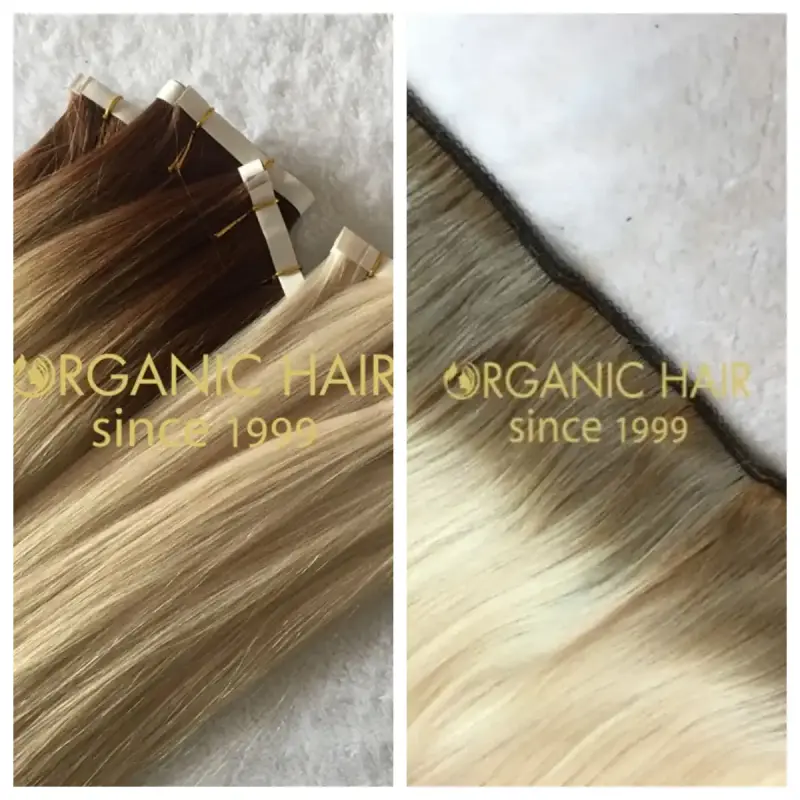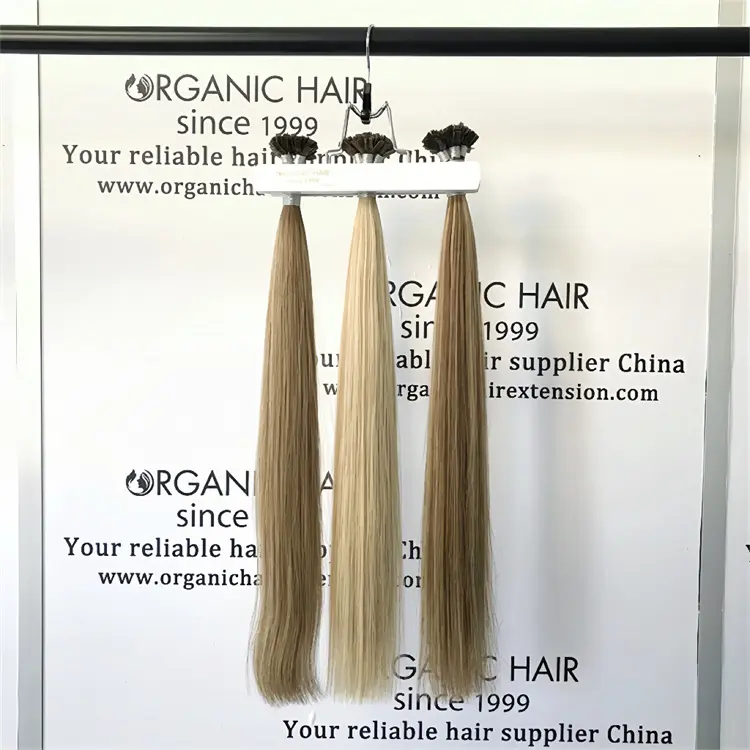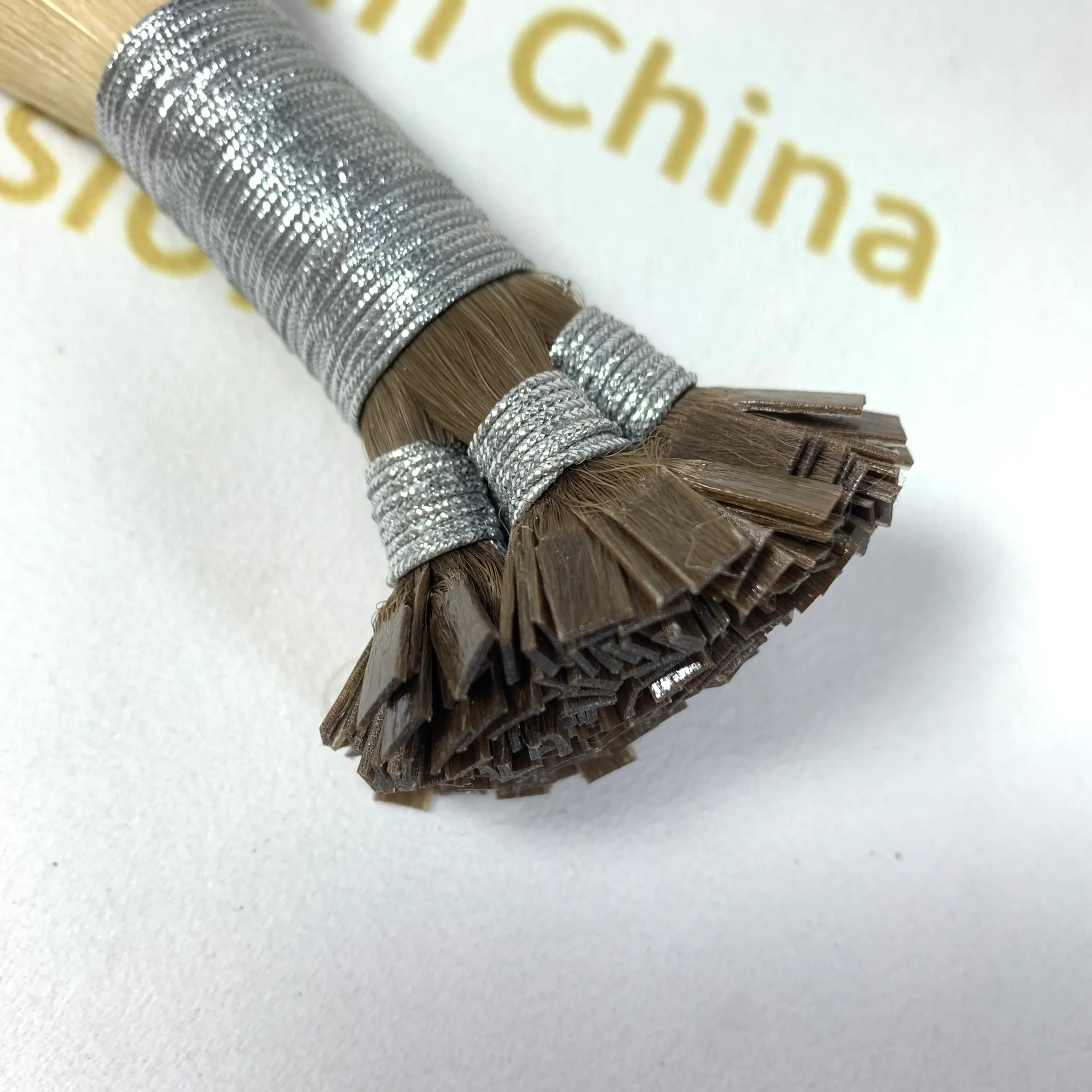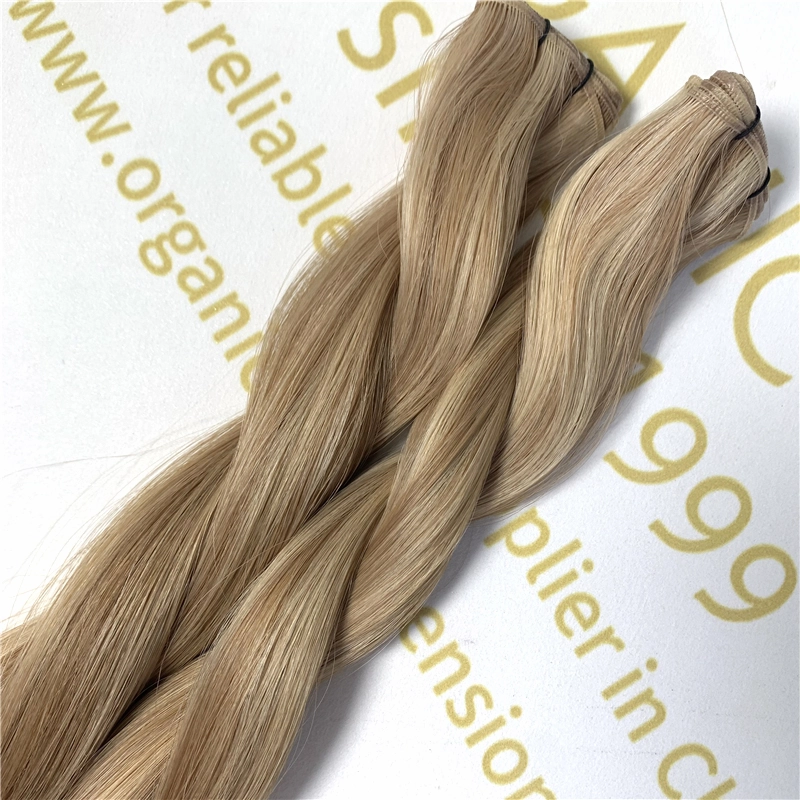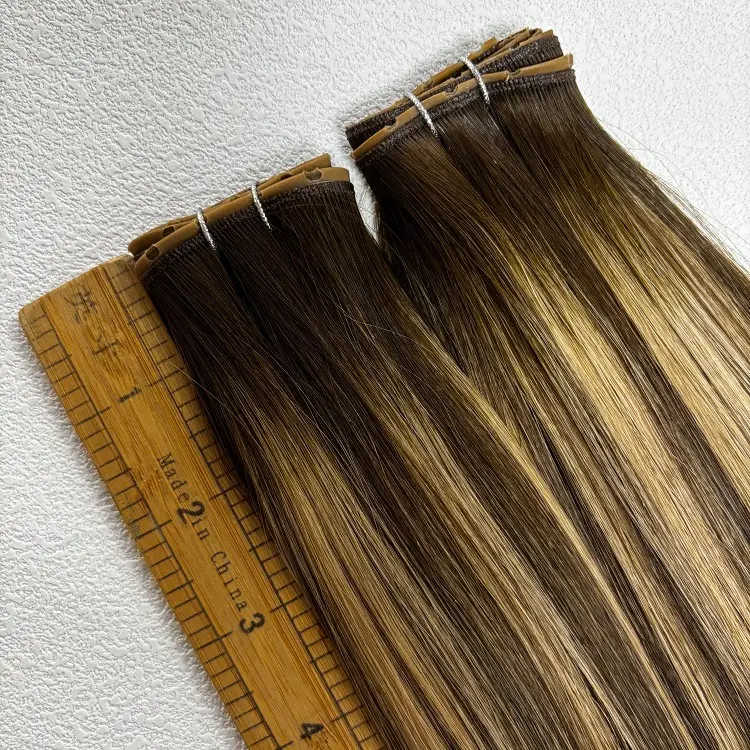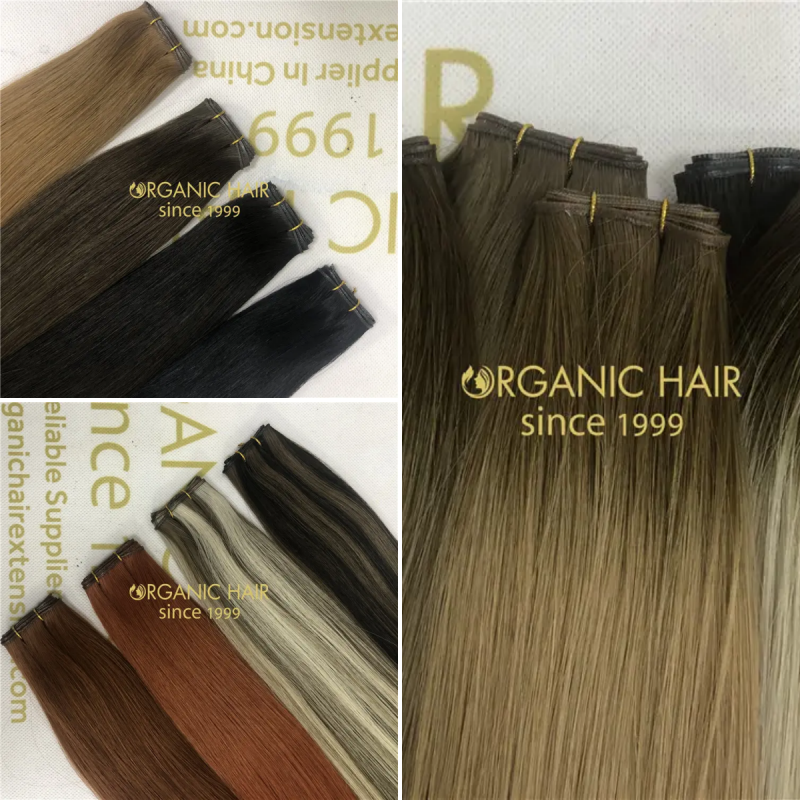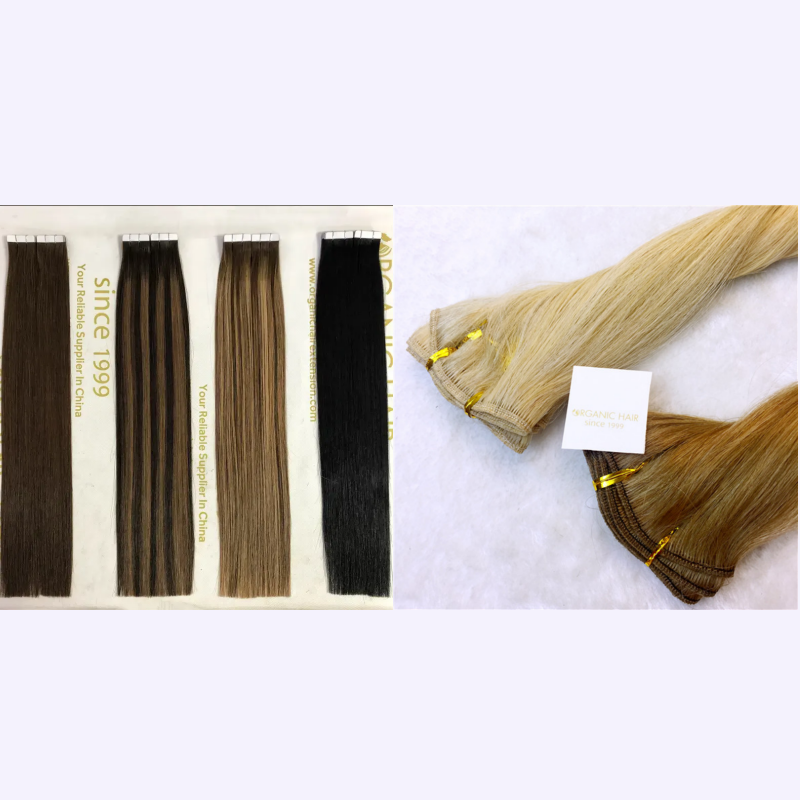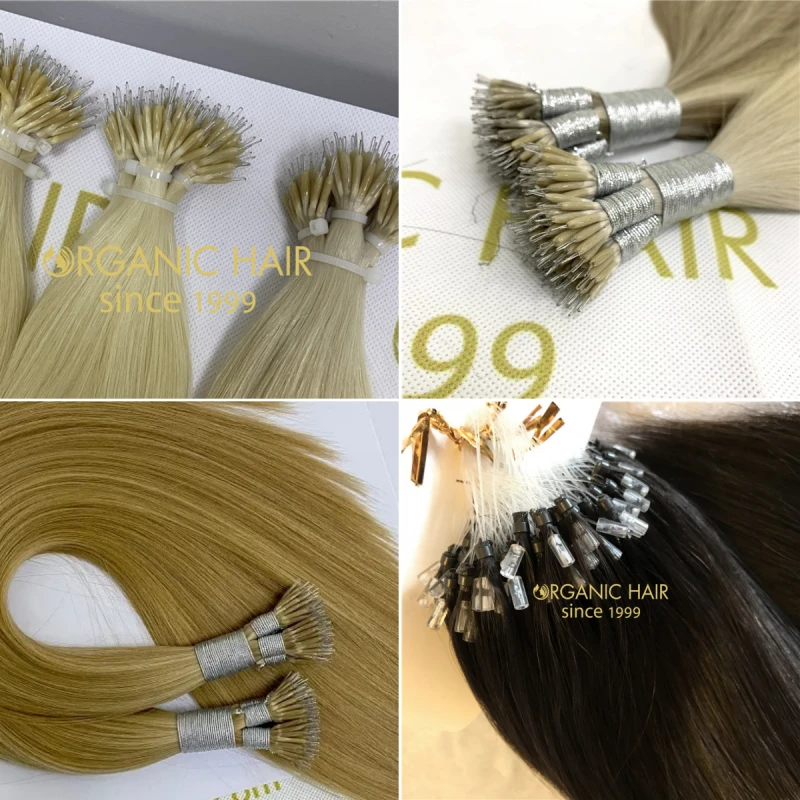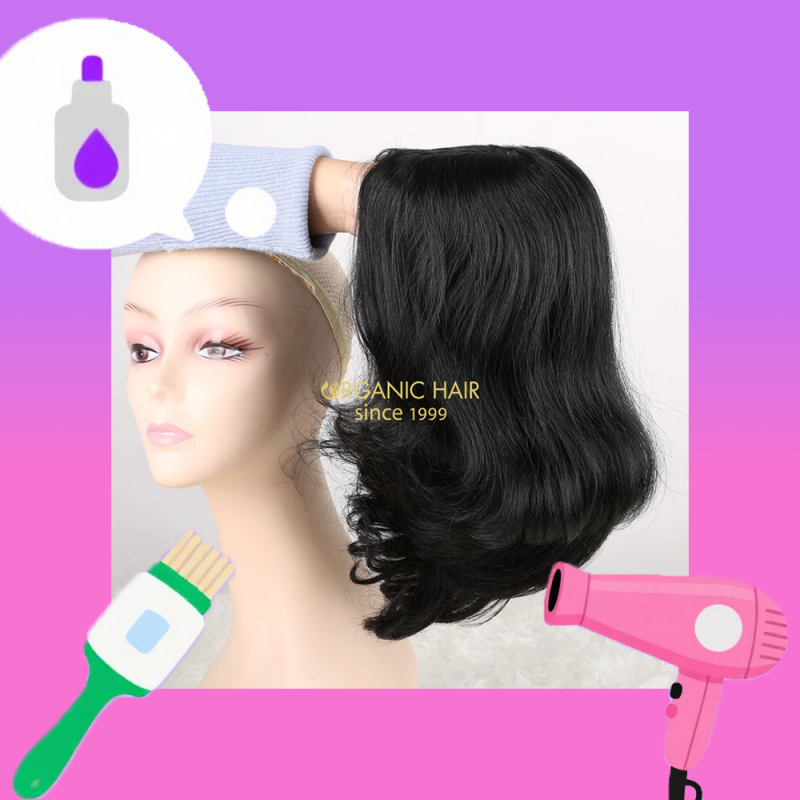When it comes to hair extensions, skin weft and halo extensions are two of the most popular choices—but they couldn’t be more different in terms of application, wearability, and maintenance. Skin weft extensions use medical-grade adhesive tapes to bond thin, flexible wefts close to the scalp, creating a seamless, long-lasting blend with natural hair. On the other hand, halo extensions feature a single, invisible wire that sits discreetly beneath your hair, requiring no glue, clips, or professional installation. Both promise added length and volume, but the real question is: which one is easier to maintain?
Maintenance is a crucial factor when choosing extensions because it affects not just your daily routine but also the longevity, cost, and health of your natural hair. High-maintenance extensions might look flawless but could become a hassle for those with busy lifestyles. Meanwhile, low-maintenance options offer convenience but may lack durability or a natural finish. Understanding the cleaning, styling, and upkeep required for each type helps you make an informed decision that fits your schedule and hair goals.
In this comparison, we’ll break down the key differences in maintenance between skin weft and halo extensions. We’ll cover daily care routines, washing and styling tips, longevity, and comfort to determine which option truly stands out for ease of use. Whether you’re a salon regular or prefer a DIY approach, this guide will help you choose the best extensions for your lifestyle.
Overview of Skin Weft Extensions
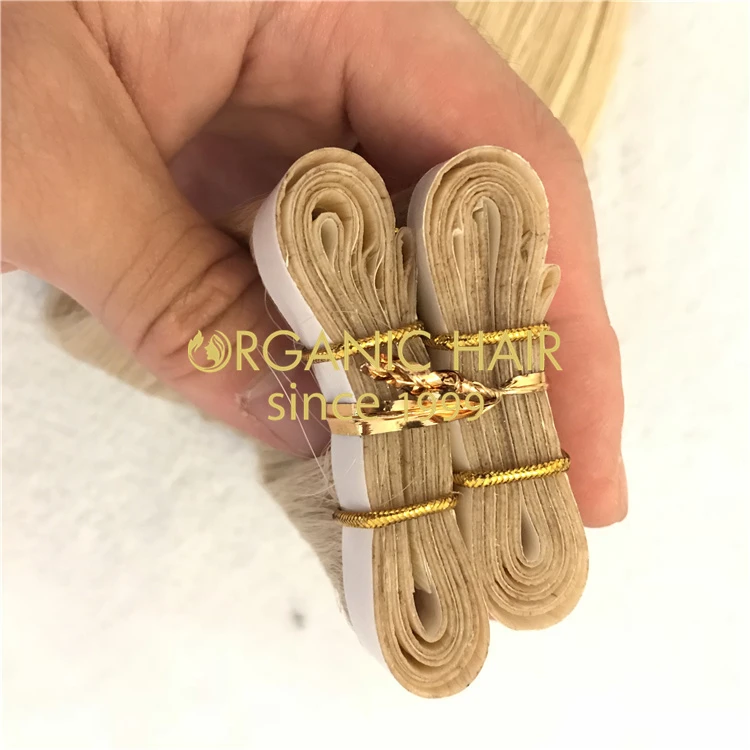
Skin weft extensions have revolutionized the hair extension industry with their ultra-thin, lightweight design that creates an undetectable finish. Unlike traditional clip-ins or bulky wefts, skin weft extensions utilize medical-grade adhesive tabs that are bonded directly to small sections of your natural hair, lying flat against the scalp for a seamless blend. The polyurethane base molds to your head's shape, making these extensions virtually invisible while providing exceptional comfort. This innovative application method allows for natural movement and styling versatility, whether you prefer sleek ponytails or voluminous curls.
One of the most appealing aspects of skin weft extensions is their impressive lifespan. With proper care and maintenance, these extensions typically last 6-8 weeks before requiring repositioning. The longevity depends on several factors including your hair's growth rate (most users need adjustments every 4-6 weeks), the quality of the adhesive, and how well you follow care instructions. Unlike temporary clip-ins, skin wefts offer semi-permanent wear, making them ideal for those seeking long-term transformation without daily application and removal.
However, this longevity comes with specific maintenance requirements that potential users should consider. Regular salon visits are necessary every 4-6 weeks for professional repositioning as your natural hair grows - typically costing $100-$200 per maintenance session. At home, you'll need to use sulfate-free shampoos and avoid oil-based products near the bonds to prevent slippage. Special attention must be paid when brushing (always start from the ends) and sleeping (a silk pillowcase and loose braid are recommended). Heat styling is possible but should be done cautiously, keeping tools away from the adhesive tabs. Proper maintenance not only extends the life of your extensions but also protects your natural hair from damage.
Overview of Halo Extensions
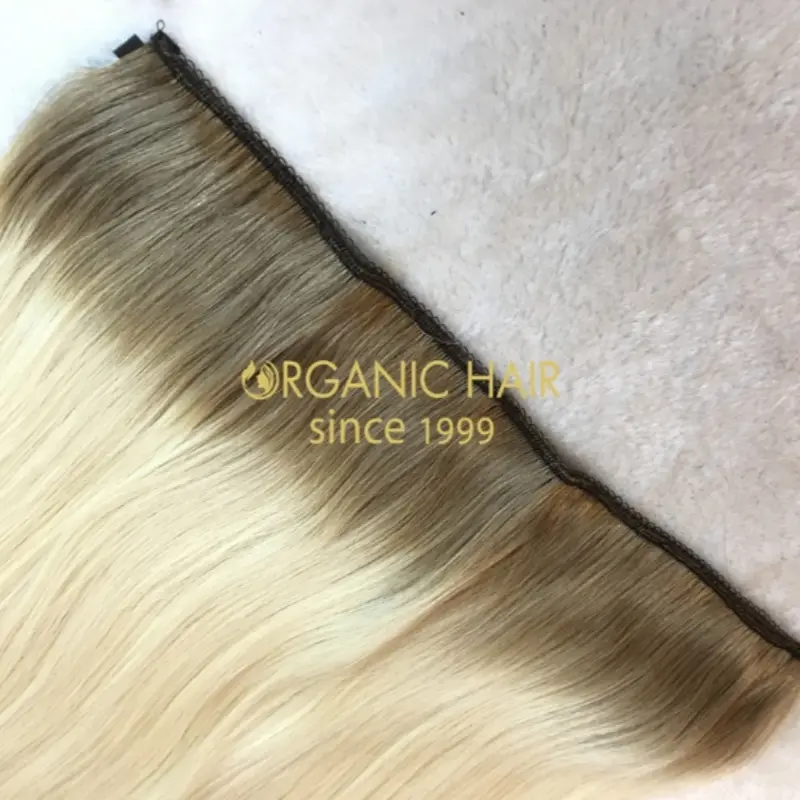
Halo extensions offer one of the most user-friendly hair extension solutions on the market, featuring a unique design that combines convenience with natural-looking results. Unlike traditional extension methods, halo hair extensions utilize a thin, transparent wire that sits discreetly around the crown of your head, hidden beneath your natural hair. The extensions attach to this wire, with the weight evenly distributed to prevent tension or damage to your bio hair. This innovative design requires no adhesives, clips, or professional installation, making halo extensions ideal for those seeking an instant length and volume boost without commitment or salon visits.
One of the biggest advantages of halo extensions is their complete removability. You can easily take them out every night and reapply them in seconds each morning, giving your natural hair regular breaks. This daily removal makes halo extensions particularly suitable for those with sensitive scalps or anyone who prefers not to sleep with extensions in. Since there are no bonds or tapes involved, there's zero risk of damage to your natural hair - a major selling point for those concerned about hair health. The extensions simply blend over your natural hair, creating instant fullness that looks completely authentic when properly matched to your hair color and texture.
When it comes to maintenance, halo extensions are remarkably low-maintenance compared to other extension types. Cleaning is straightforward - you can wash them separately using mild shampoo whenever they lose their freshness, typically every 10-15 wears. Proper storage is key to maintaining their shape; always hang them or lay them flat to prevent tangling. Occasional adjustments might be needed to the wire's tightness as it may stretch over time, but this is easily done at home. Unlike skin weft extensions, halo extensions require no professional upkeep, though occasional trims may help them blend better with your natural hair as it grows. With proper care, a quality set of halo extensions can last 1-2 years, making them an economical choice in the long run.
Maintenance Comparison: Skin Weft vs. Halo Extensions
When choosing between skin weft and halo extensions, understanding their maintenance requirements is crucial for finding the perfect match for your lifestyle. Let's break down the key differences in four essential categories:
A. Daily Care Routines
Skin Weft Extensions demand careful daily attention to maintain their seamless appearance. You'll need to avoid oil-based products near the roots, as they can weaken the adhesive bonds. Brushing requires special technique - always start from the ends and work upward gently using a loop brush to prevent tugging at the bonds. Sleeping with skin wefts means adopting protective styles like loose braids and using silk pillowcases to minimize friction.
Halo Extensions offer unparalleled simplicity in daily care. The most significant advantage is the ability to remove them completely at night, giving your scalp a break and eliminating bedtime maintenance concerns. No special brushing techniques are needed - you can style and brush them just like your natural hair. Since there are no adhesives involved, you're free to use your favorite hair products without restrictions.
B. Washing & Styling
Maintaining skin weft extensions requires a delicate balance with washing. You'll need to limit shampooing to 1-2 times per week using only sulfate-free formulas to preserve the adhesive. When washing, avoid direct water pressure on the bonds and never rub the roots vigorously. Heat styling is possible but requires caution - keep tools at moderate temperatures and away from the adhesive tabs.
Halo extensions provide much more flexibility in washing and styling. You can choose to wash them separately (recommended every 10-15 wears) or while wearing them. There are no product restrictions, allowing for creative styling with all your favorite tools and products. The absence of bonds means you can style with high heat if desired, though moderate temperatures will prolong the hair's lifespan.
C. Longevity & Professional Upkeep
Skin weft extensions typically last 6-8 weeks before needing professional attention. You'll require salon visits every 4-6 weeks for repositioning as your hair grows, with costs adding up over time. The adhesive tabs will need complete replacement every 2-3 months. While the initial application provides long-term wear, the ongoing maintenance can become costly and time-consuming.
Halo extensions stand out for their minimal professional requirements. With proper care, a quality halo extension can last 1-2 years without needing replacement. There are no salon visits required - all adjustments can be made at home. The wire may need occasional tightening over time, but this is a simple DIY fix. This makes halo extensions significantly more cost-effective in the long run.
D. Comfort & Convenience Factors
Many users find skin weft extensions can feel slightly tight initially, especially after fresh application. As your hair grows, you might notice some tension until your next salon adjustment. The bonded tabs, while secure, can create a sensation some users need time to acclimate to. However, once accustomed, most wearers forget they're there.
Halo extensions win in the comfort department with their lightweight, tension-free design. The absence of bonds or clips means no pulling on your natural hair. Some users report a brief adjustment period to the wire's feel, but most find it disappears quickly. The convenience of instant removal makes them ideal for those who value flexibility in their haircare routine.
Pros and Cons Summary: Skin Weft vs. Halo Extensions
Choosing between skin weft and halo extensions ultimately depends on your lifestyle, budget, and haircare preferences. Below, we break down the key advantages and limitations of each to help you make an informed decision.
Skin Weft Extensions
Pros:
Seamless, Undetectable Blend – The ultra-thin polyurethane base and medical-grade adhesive create a flawless, natural-looking finish that mimics the scalp, making these extensions virtually undetectable, even in updos or high ponytails.
Long-Lasting Wear – With proper care, skin wefts can last 6-8 weeks before requiring repositioning, making them ideal for those who want a semi-permanent transformation without daily application.
Styling Versatility – Unlike clip-ins, skin wefts allow for heat styling, curling, and even swimming (with precautions) since the bonds are secure and lie flat against the head.
No Bulky Clips or Tracks – The lightweight, flexible wefts provide volume without the discomfort of traditional sew-in or clip-in extensions.
Cons:
High Maintenance – Requires sulfate-free shampoos, careful brushing techniques, and avoidance of oils near the roots to prevent bond slippage.
Salon Dependency – Must be professionally installed and adjusted every 4-6 weeks, adding to long-term costs (typically $100-$200 per visit).
Potential Discomfort – Some users report initial tightness or itching from the adhesive, especially in hot weather.
Risk of Damage if Misused – Improper removal or excessive tension can lead to breakage, making them less ideal for those with very fine or fragile hair.
Halo Extensions
Pros:
Easy DIY Care – No adhesives, clips, or salon visits needed. Simply place the wire under your natural hair and blend—removal takes seconds.
Zero Damage – Since halo extensions don’t attach to your natural hair, there’s no risk of traction alopecia, adhesive residue, or breakage.
Low Maintenance – Wash separately or wear while showering (with mild shampoo). No special products or tools required.
Cost-Effective Longevity – A high-quality halo extension can last 1-2 years with proper care, far outlasting bonded extensions.
Ideal for Sensitive Scalps – Perfect for those who experience irritation from clips, tapes, or glue.
Cons:
Less Secure for Active Lifestyles – While generally stable, vigorous activities (e.g., running, swimming) may require readjustment. Not as secure as bonded extensions for sports.
Limited Styling for Fine Hair – Those with very fine or slippery hair may struggle to keep the wire hidden, especially in high winds.
Less Customizable – Unlike skin wefts, halo extensions come in pre-set lengths/volumes, making blending trickier for unique hair textures or colors.
Visible Wire if Misplaced – If not positioned correctly, the wire may peek through thin hair sections.
Which Is Right for You?
Choose Skin Weft If: You want a long-term, salon-quality look and don’t mind maintenance. Ideal for special events, thick hair, or those willing to invest in professional upkeep.
Choose Halo Extensions If: You prioritize easy, damage-free wear and prefer a removable option. Best for beginners, sensitive scalps, or low-maintenance routines.
By weighing these pros and cons against your daily habits and haircare goals, you can select the extension type that aligns perfectly with your needs.
Final Verdict: Which Hair Extension Is Easier to Maintain?
When comparing skin weft vs. halo extensions, the "easier" option depends entirely on your lifestyle, haircare habits, and priorities. Here’s the ultimate breakdown to guide your decision:
For Low-Maintenance Users: Halo Extensions Win
If you want minimal daily effort, halo extensions are the clear winner. Their no-adhesive, no-commitment design means:
✅ Zero salon visits – All adjustments can be done at home.
✅ No product restrictions – Use any shampoo, oil, or styler without worrying about bonds.
✅ Removable anytime – Take them out before workouts, swimming, or bedtime.
Ideal for: Busy professionals, travelers, gym enthusiasts, or anyone who values convenience over permanence.
For a Long-Term, Natural Look: Skin Weft Extensions Shine
If you’re willing to invest in upkeep for flawless, undetectable volume, skin wefts deliver:
✅ *Seamless 24/7 wear* – No visible clips or wires, even in updos.
✅ Better for active styling – Stays secure during intense workouts (unlike halos).
✅ More natural density – Ideal for those with very thin hair needing full coverage.
Note: Requires bi-monthly salon visits ($$) and strict at-home care.
Best for: Brides, special events, or those with salon access who prioritize longevity over convenience.
Lifestyle Considerations:
Gym-goers/Swimmers: Halo extensions win for easy removal, but skin wefts (with waterproof adhesive) stay put during workouts.
Busy moms/Students: Halo’s 5-second application beats salon-dependent skin wefts.
Fine/Thin Hair: Skin wefts provide better grip, while halos may slip.
Budget-Conscious: Halo extensions cost less long-term (no salon fees).
The Bottom Line
Halo Extensions = "Set It and Forget It"
Easiest for low-maintenance users who want damage-free, removable hair.Skin Weft Extensions = "Professional Perfection"
Best for commitment-ready users seeking salon-quality, long-term wear.
Your choice hinges on one question: Do you prioritize convenience or longevity? Answer that, and you’ll find your perfect match!
FAQ: Skin Weft vs. Halo Extensions
1. Can You Swim or Shower with Skin Weft or Halo Extensions?
Skin Weft: Yes, but with precautions. Chlorine/saltwater can weaken adhesive bonds—rinse immediately after and avoid excessive soaking. Use waterproof adhesive for best results.
Halo Extensions: Yes! Remove before swimming to prevent tangling, or wear a tight swim cap. Showering is fine (use sulfate-free shampoo if worn).
2. Do Halo Extensions Slip Off Easily?
Generally no, if properly fitted. The invisible wire sits snugly under your natural hair. However:
Fine/slippery hair may need extra teasing at the crown for grip.
High-impact activities (e.g., running, dancing) might require occasional readjustment.
3. How Often Should Skin Weft Tapes Be Replaced?
Every 6-8 weeks, or during salon maintenance visits. Signs you need new tapes:
Bonds feel loose or slide easily.
Visible adhesive residue or matting.
Hair growth causes discomfort at the roots.
4. Can You Exercise with Skin Weft Extensions?
Yes! They’re secure for workouts, but:
Blot sweat (don’t rub) to preserve adhesive.
Avoid excessive friction (e.g., headstands).
Halo extensions are easier for frequent gym-goers (removable).
5. Which Extensions Work Best for Short Hair?
Skin Weft: Better for short hair (chin-length or longer) since bonds blend seamlessly.
Halo Extensions: Need enough length to cover the wire (shoulder-length+ ideal).
6. Can You Color or Heat-Style These Extensions?
Skin Weft: Yes, but avoid direct heat on bonds. Human hair wefts can be dyed (consult a stylist).
Halo: Yes to heat styling; coloring depends on hair quality (virgin hair takes dye best).
Bonus Tip: For both types, always use heat protectant!
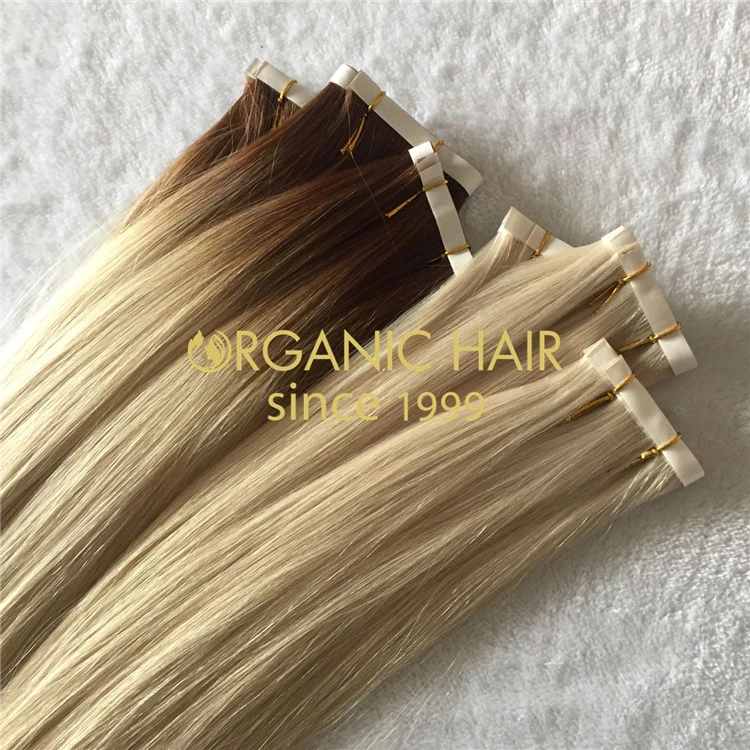
Conclusion: Choosing Between Skin Weft & Halo Extensions
The right hair extensions depend on your lifestyle, maintenance tolerance, and hair goals. Skin weft extensions offer a seamless, long-term solution but require salon upkeep, while halo extensions provide effortless, damage-free wear with no professional help needed.
Before deciding, ask yourself:
How often can you visit a salon?
Do you prioritize convenience or longevity?
Is your routine low-maintenance or high-touch?
Premium Hair Extensions Manufacturer & Wholesaler – Worldwide Delivery!
As a leading manufacturer and wholesaler of high-quality Skin Weft and Halo Extensions, we supply salons, retailers, and distributors globally. Our products feature:
✔ Undetectable, seamless blends (Skin Weft)
✔ Easy, damage-free wear (Halo)
✔ 100% Remy human hair for natural styling
✔ Customizable lengths/colors available
Ideal for salons, e-commerce stores, and beauty professionals seeking reliable, salon-grade extensions. Enjoy competitive pricing, bulk discounts, and OEM/ODM services.
Contact us for quotes & catalog!
Email: info@organichairextension.com
Website: https://www.organichairextension.com/ WhatsApp: +86-13210017159
Serving clients worldwide with fast shipping & exceptional quality!
